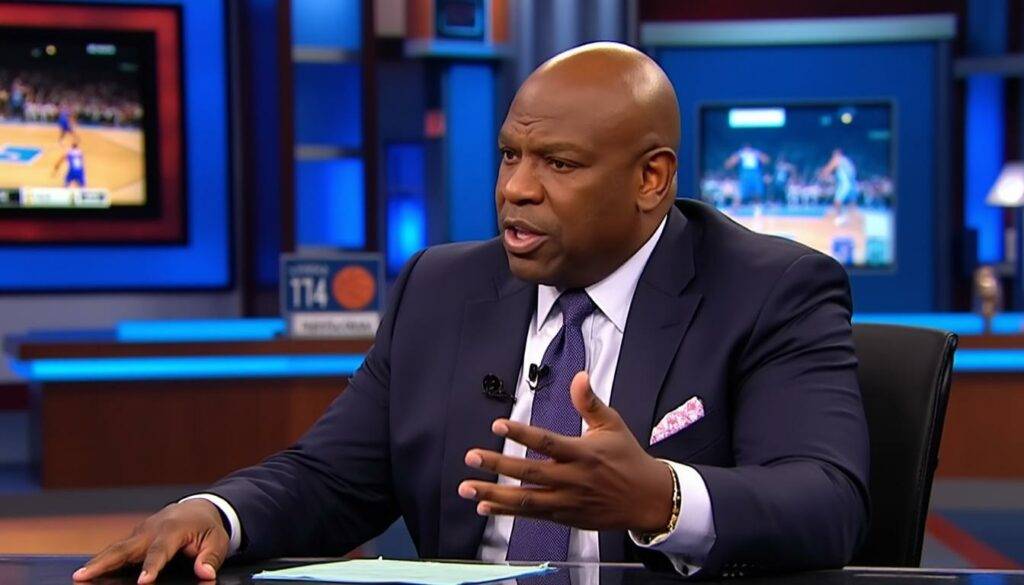Charles Barkley criticizes TNT for poor handling of 'Inside the NBA' during uncertain times

Charles Barkley’s outspoken critique of TNT's management during a tumultuous period for "Inside the NBA" highlights a deeper issue in how television networks handle transitions affecting their broadcast teams. As the beloved NBA studio show prepares to move under ESPN’s banner, Barkley’s frustration sheds light on the challenges media companies face in balancing entertainment value with transparent communication. This controversy underscores not only the shifting landscape of NBA broadcasting but also the human side of television production, where behind-the-scenes talent was left in the dark amid an 11-year, $76 billion media rights shakeup involving major players like ABC/ESPN, NBC, and Amazon.
Charles Barkley’s Critique Of TNT’s Poor Communication During NBA Rights Shift
Barkley revealed during a candid appearance on Barstool Sports' "Pardon My Take" podcast that the uncertainty over the show's future deeply affected not only the on-air NBA analysts but also the off-screen staff. Many were worried about their mortgages and children’s education due to the ambiguity surrounding the contract negotiations. Barkley’s frustrations stemmed from how TNT consistently kept the team in the dark, forcing them to piece together information from internet rumors rather than direct communication.
Key points about TNT's communication breakdown:
- TNT employees learned about the broadcast rights loss and "Inside the NBA" licensing to ESPN via internet and social media.
- On-air personalities found out through congratulatory texts from ESPN hosts like Scott Van Pelt and Brian Windhorst before TNT executives reached out.
- Barkley criticized TNT executives for their failure to provide timely and honest updates, calling their approach "awful" and disrespectful.
- The lack of transparency created anxiety amid one of the biggest shifts in sports broadcasting in recent years.
As the network loses NBA rights starting the 2025-26 season to ESPN and partners, the uncertainty will impact both television production quality and employee morale. For fans tracking the dynamics of basketball entertainment, this transition serves as a case study in the pitfalls of poor media company management amid industry upheaval.
Inside the NBA’s Legacy Amidst Corporate Upheaval
"Inside the NBA" has been a cornerstone of NBA coverage since 1989, with legendary hosts like Ernie Johnson, Kenny Smith, Shaquille O’Neal, and Barkley himself driving its success. Despite the show moving to ESPN under a licensing deal finalized in late 2024, all the main talent will remain TNT employees, raising questions about how this hybrid arrangement will play out in practice.
Barkley, who has been a stalwart of the show since 2000, acknowledges the show’s move is "interesting" but is skeptical about how ESPN will preserve its unique entertainment flavor. The Emmy-winning show covers marquee NBA events such as the Finals, Playoffs, Christmas Day games, and the season’s opening week with a blend of sharp analysis and humor that fans cherish.
What fans and NBA analysts expect from the transition:
- A seamless continuation of "Inside the NBA’s" signature banter and chemistry.
- Retention of the key hosts despite cross-network arrangements.
- High-quality basketball analysis alongside dynamic entertainment.
- Uncertainty about any format or production changes under ESPN’s vision.
The Broader Impact on Sports Broadcasting and Media Companies
The shift of iconic NBA broadcasting rights from TNT to ESPN as part of a mammoth $76 billion media deal involving ABC, NBC, and Amazon reflects the rapid evolution of sports entertainment and distribution. Networks face immense pressure to innovate while managing legacy shows like "Inside the NBA" without alienating reputable talent or loyal audiences.
Barkley’s criticisms emphasize the risks media companies take when communication falters, impacting staff trust and public image. TNT’s struggle is a cautionary tale for any entertainment entity navigating significant rights and production changes.
Lessons learned from TNT’s handling:
- Transparent communication is crucial to maintain morale among on-air and behind-the-scenes teams.
- Succinct and timely updates prevent misinformation and rumors from defining the narrative.
- Respect for veteran analysts like Barkley and their contributions is critical during transitions.
- Collaboration between networks ensures a smooth viewer experience amid shifting broadcast landscapes.
As NBA fans continue to analyze how these changes affect everything from pregame shows to player-focused content, understanding the industry's inner workings complements deep dives into skills and player development, like those you can find discussing the rise of new stars in the playoffs or the evolution of basketball gear.
Looking Ahead: What This Means For NBA Fans And Broadcasting
For basketball enthusiasts who appreciate both the technical aspects of the sport—such as detailed rules and scoring systems—and the compelling personalities behind the microphones, the transition of "Inside the NBA" is both exciting and laden with challenges. As new broadcast arrangements settle, fans should expect shifts in how NBA content is delivered and possibly how stars like Kawhi Leonard are covered, given ongoing health concerns highlighted in recent analysis (Kawhi Leonard's injury updates).
Fans should watch for:
- Potential new broadcast formats integrating digital and live components.
- Continued candid perspectives from top NBA analysts despite network changes.
- The impact on the coverage of emerging talents and the NBA draft process (NBA Draft insights).
- How the evolving television production environment influences overall entertainment quality.
Sports broadcasting’s future is always intertwined with how media companies manage change. The Barkley-TNT-ESPN saga is a vivid reminder that beyond the glitz and glam of national TV, real people and real frustrations shape the narratives we see on screen.
